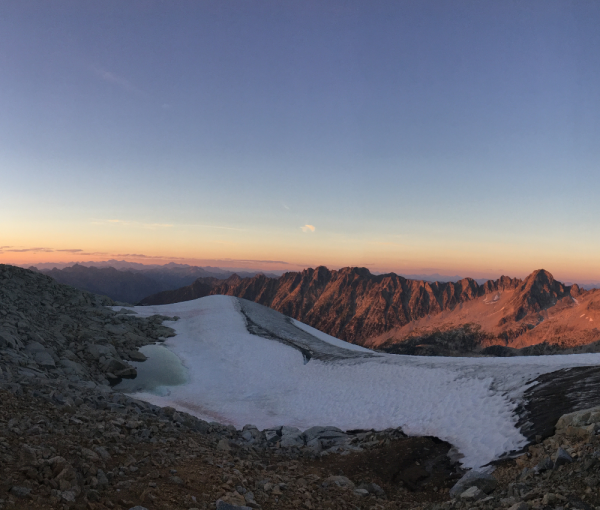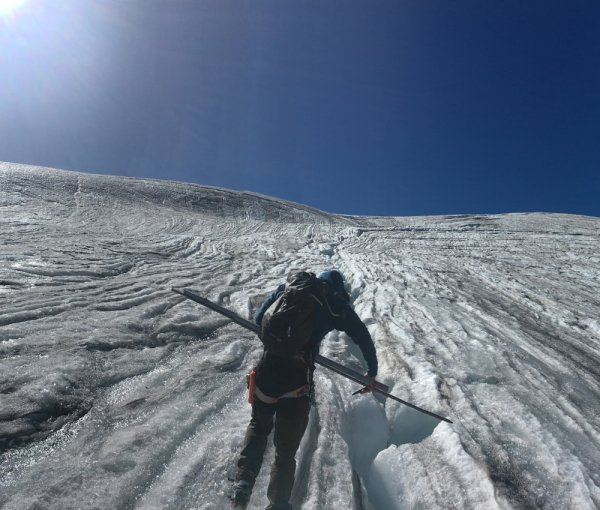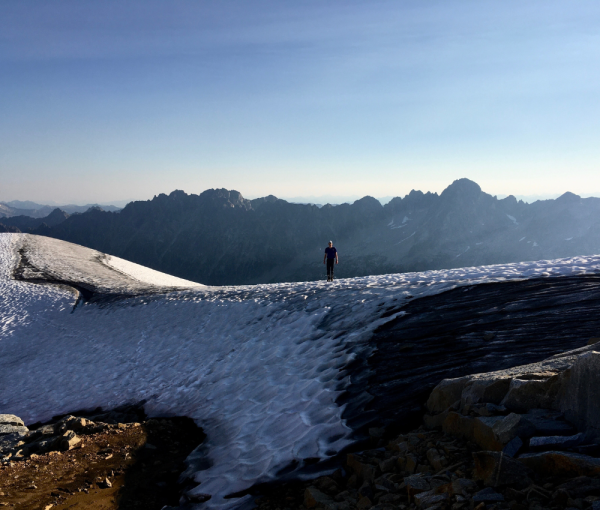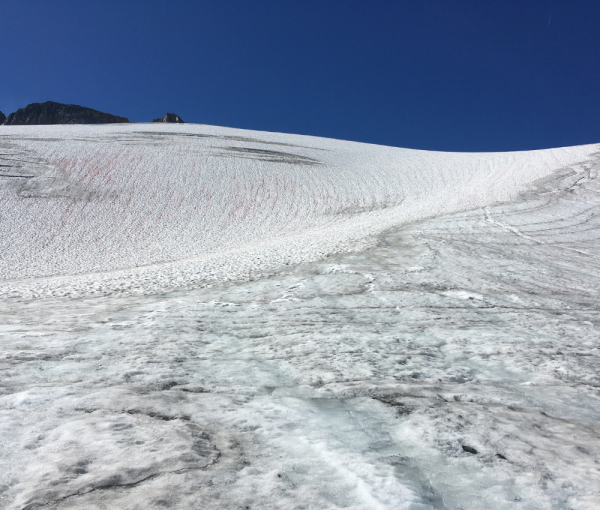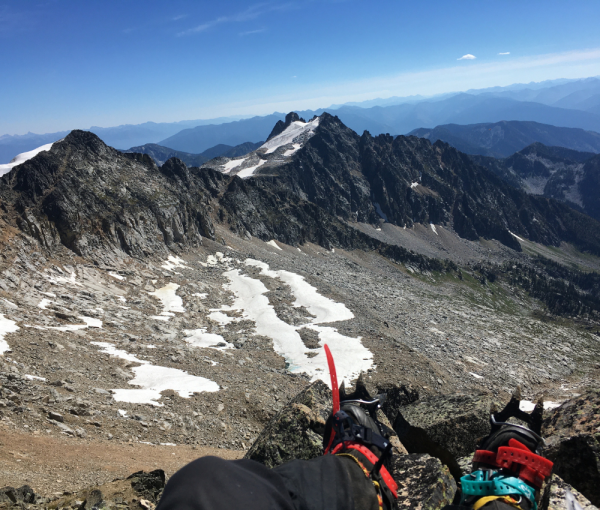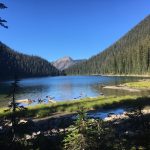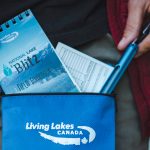Getting up close and personal with Kokanee Glacier
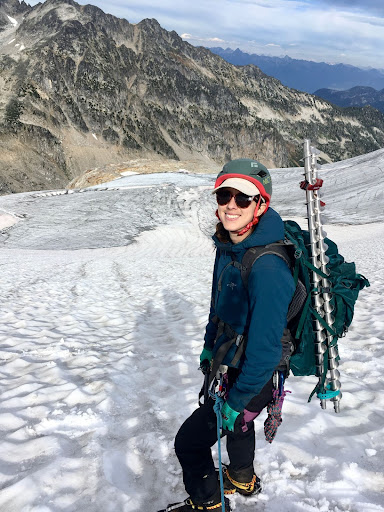
Living Lakes Canada Program Manager Heather Shaw on Kokanee Glacier.
Anticipating my early morning view, I eagerly got out of my sleeping bag, pulled on all of my warmest layers, and crawled out of my tent. I was greeted with sun-kissed alpine peaks and a vast sea of snow and ice glistening in the morning sun. This was an experience I won’t forget, and luckily one I will repeat.
In early September, I joined Ben Pelto, a postdoctoral researcher at the University of British Columbia, for three days on Kokanee glacier. Ben has been monitoring the Kokanee Glacier for the last decade, primarily as part of a larger project which aimed to measure and understand how glaciers in the Columbia River Basin are responding to climate change. You can find the full technical report on this project here.
Ben is based out of Vancouver, and when the Columbia River Basin Glacier Project completed he continued to monitor Kokanee on his own accord. Ben has been looking for someone to carry on the work he started on Kokanee glacier, and that is where Living Lakes Canada stepped in. Moving forward, as the High Elevation Program Manager for Living Lakes Canada, I will be responsible for continuing the measurements on Kokanee glacier.
In order to glean as much knowledge from Ben as I could, I spent these three days learning from him how to take measurements that contribute to calculating glacier mass balance, as well as help indicate the direction and distance of travel the glacier is moving. Measurements are taken from poles that have been drilled into the glacier with an auger. Although many glacier measurements are now taken with LiDAR instruments, there is no substitute for boots-on-the-ground measurements.
This was my first time on Kokanee glacier, observing the direct connection between the glacier, lakes, and streams. The opportunity to train with Ben was invaluable and I am excited to continue the monitoring work he started.
The fate of glaciers throughout B.C. and the world is obvious. They are melting. Ben mentioned that Kokanee glacier, from 2014-2021, has been losing an average of 2% of its volume per year — 16.5% total. He also noted that even if we have a year where snowpack is above average the glacier will continue to shrink. It cannot compete with our increasingly warm summers. That being said, the more we understand how glacier melt may impact the supply and quality of the water in our headwaters, the better we can adapt and prepare for the changes we will ultimately face due to climate change.
Heather Shaw is the Program Manager for Living Lakes Canada’s High Elevation Monitoring Program. Contact her at heather.shaw@livinglakescanada.ca


